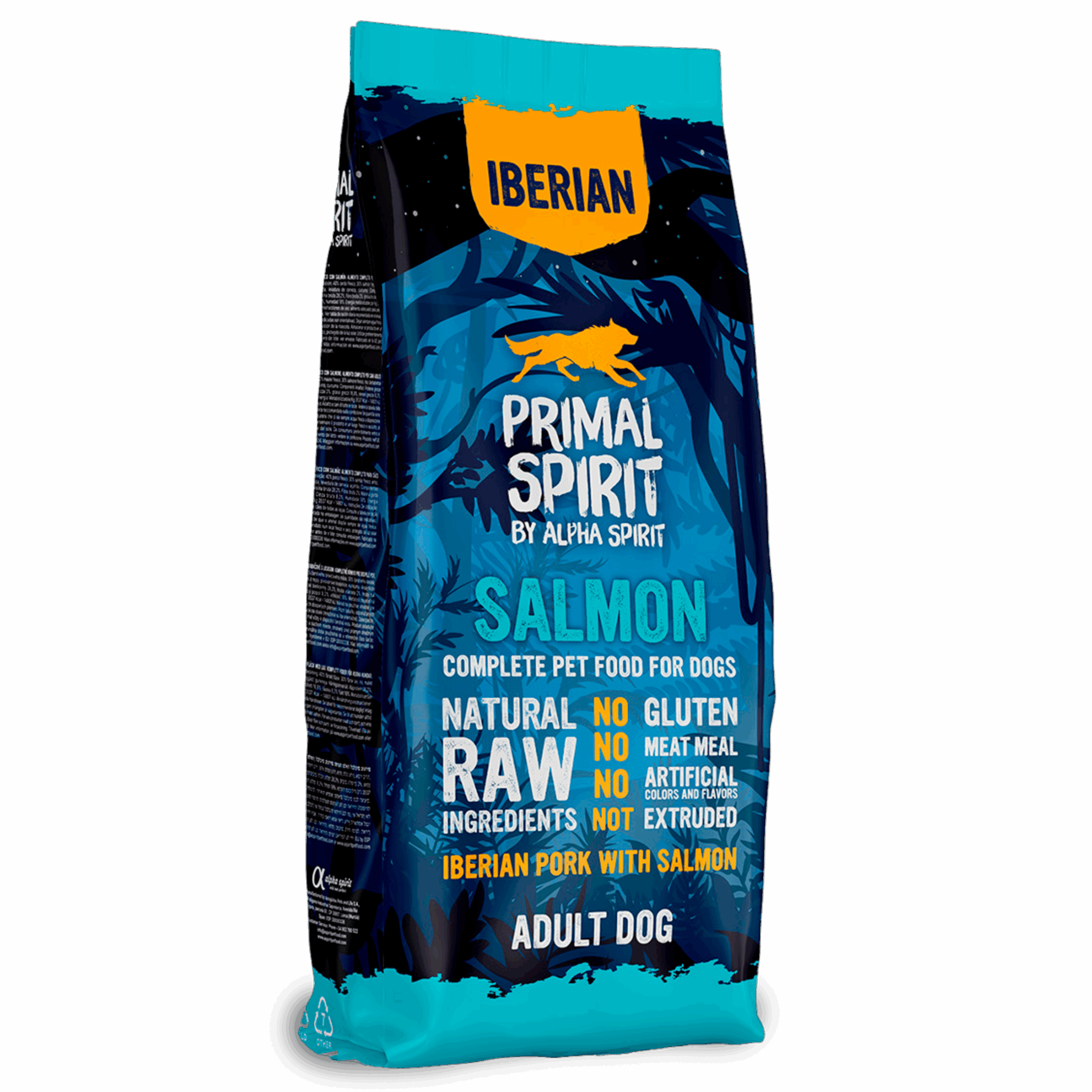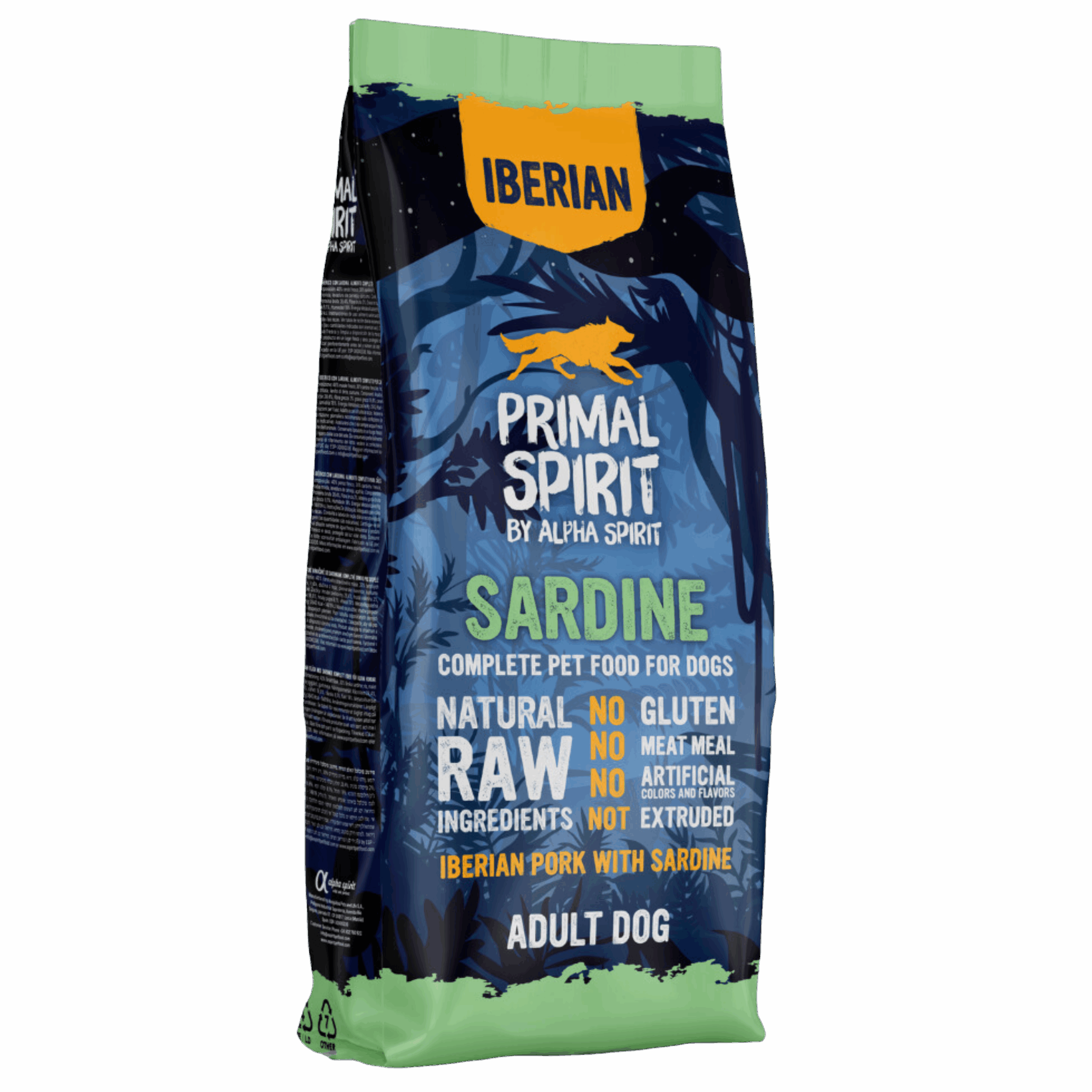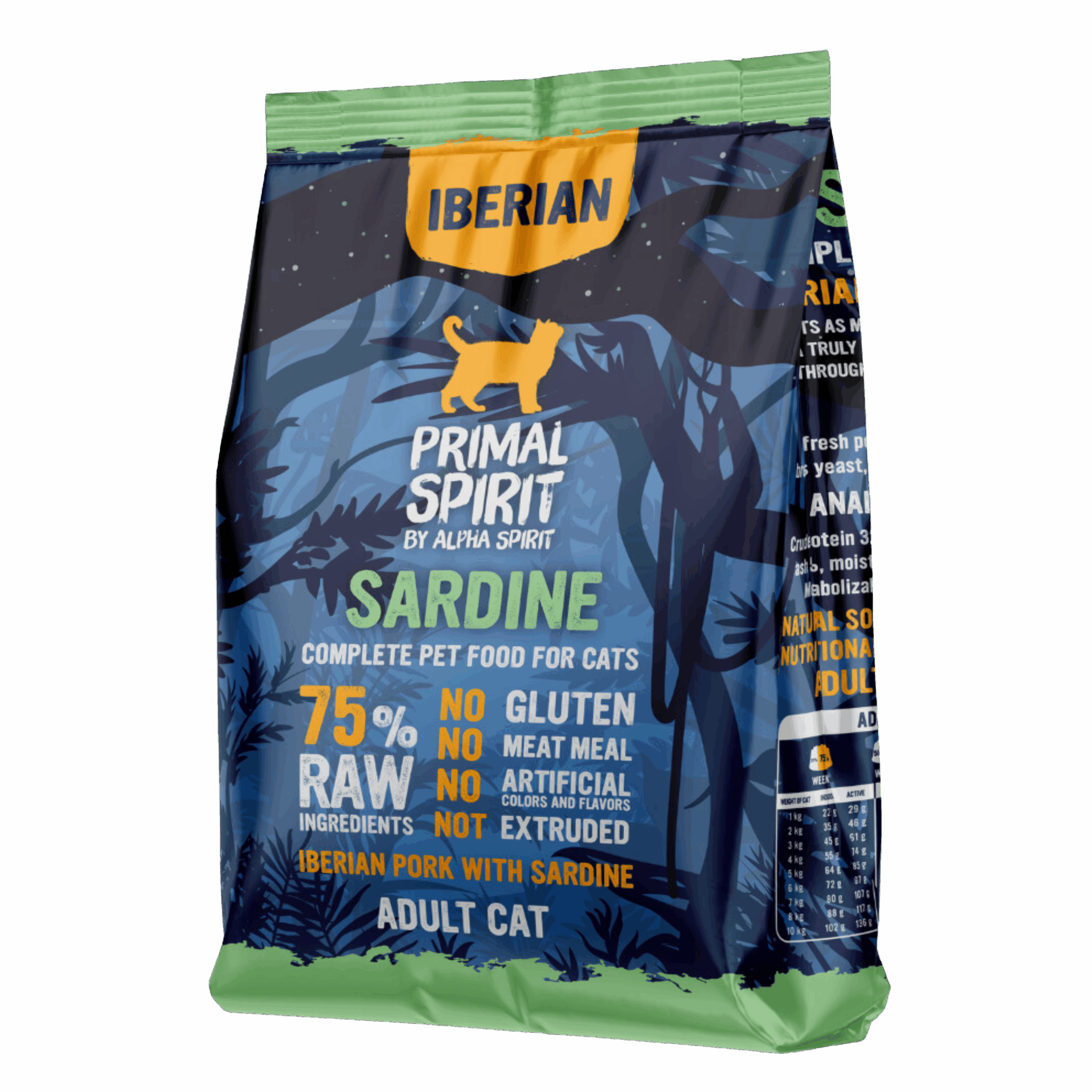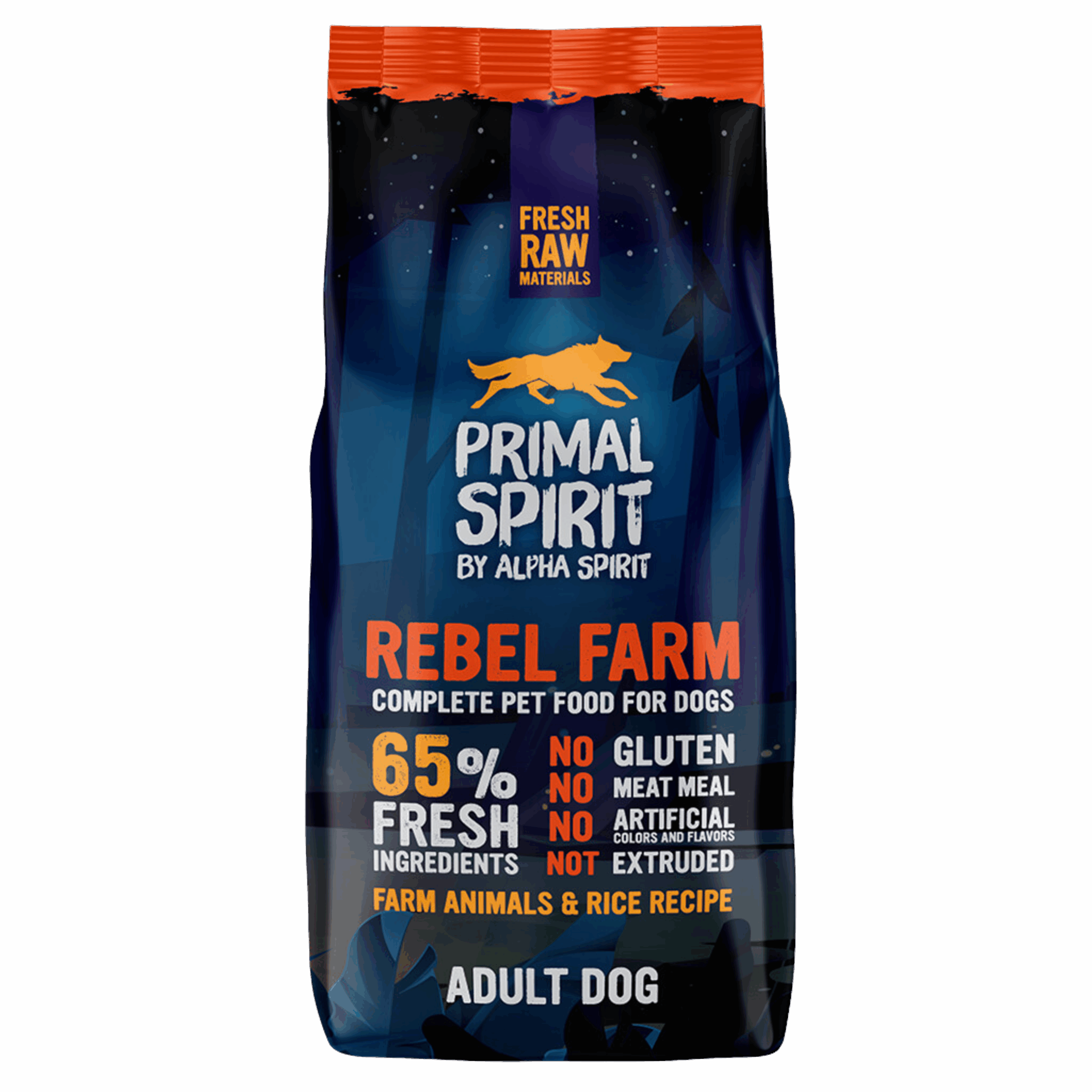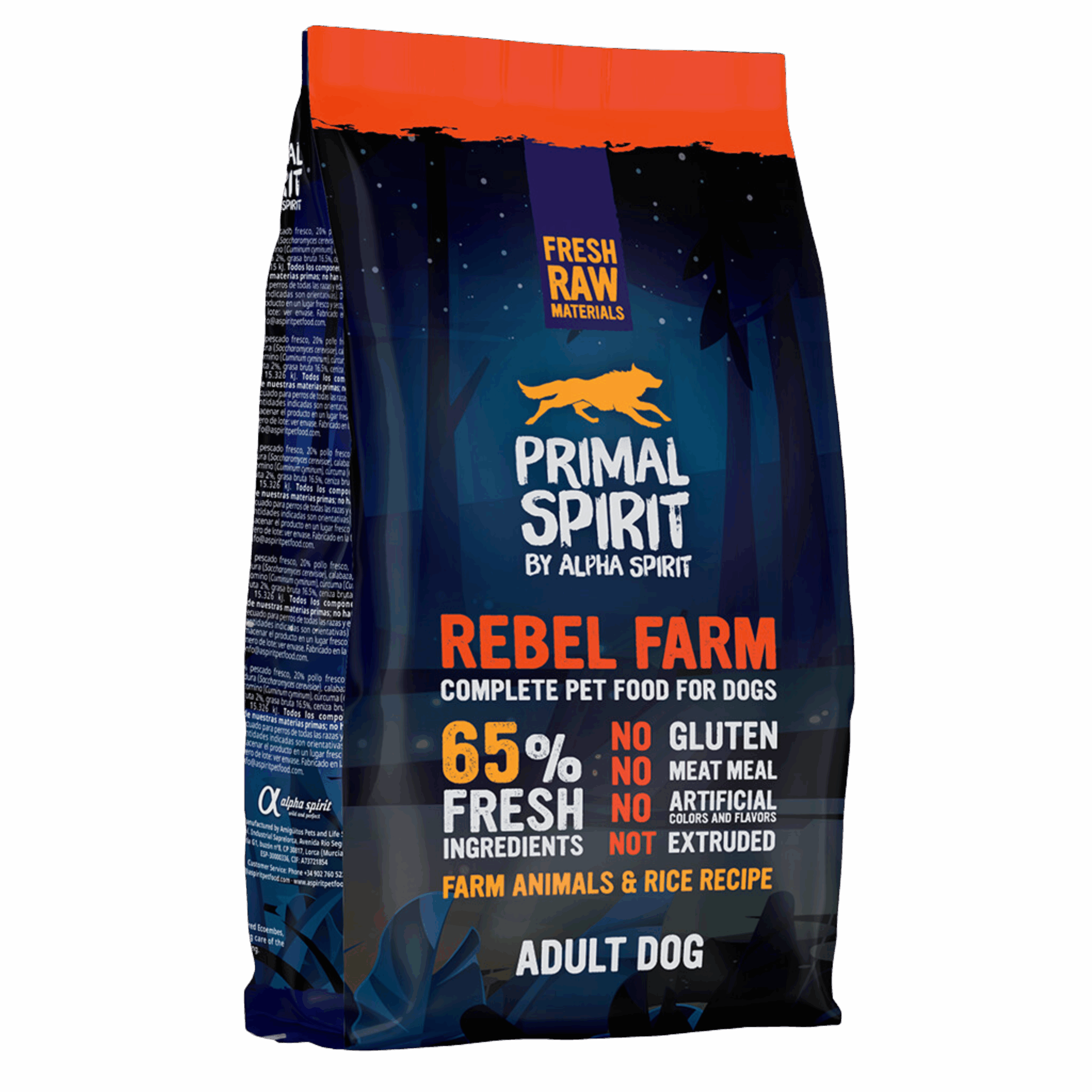Introduction
In a world where pet owners are increasingly focused on health and nutrition, choosing the right dog food has never been more crucial. With the rise of various feeding options, cold-pressed dog food has emerged as a popular alternative, promising enhanced benefits for our canine companions. Understanding this method can help you make informed decisions for your pet’s diet.
Cold-pressed dog food is made using a unique process that involves pressing and shaping ingredients without exposing them to high temperatures. This method aims to preserve the nutritional value of the ingredients, leading to a product that some claim is superior to traditional kibble. As this feeding option gains traction, it’s important to explore its production, benefits, and potential drawbacks.
What is cold-pressed dog food?
Cold-pressed dog food is a type of dry food distinguished by its manufacturing process called cold pressing. Unlike traditional kibble, which is often produced through extrusion at high temperatures, cold-pressed food is created at much lower temperatures. This gentle cooking method ensures that the natural nutrients and essential vitamins in the raw ingredients are better preserved. The lower cooking temperature helps maintain the integrity of natural ingredients, such as proteins, fats, and carbohydrates, leading to a product that is closer in composition to a raw diet
How is cold-pressed dog food made?
Cold-pressed dog food is made using a specialised manufacturing process that differs significantly from the production of traditional kibble. The method is designed to preserve the natural nutrients found in the raw ingredients. The process begins with carefully selected, high-quality, natural ingredients that often include a mix of meats, vegetables, fruits, and essential vitamins and minerals.
Unlike the high-heat cooking used in making dry dog foods, cold pressing occurs at much lower temperatures. This is key to retaining the natural integrity of the ingredients. During the cold-pressing process, ingredients are mixed and then pressed at temperatures below 122 degrees Fahrenheit (50 degrees Celsius). The cooler temperature ensures that the essential nutrients, like vitamins and enzymes that are sensitive to heat, are not destroyed.
The resulting pellets maintain more of their nutritional content compared to traditional kibble, which is cooked at high temperatures. After pressing, the food is dried at a low temperature to reduce moisture content, which increases shelf life without the use of artificial preservatives.
Once completed, cold-pressed dog food pellets can be served to dogs as a complete food. They can be mixed with warm water before feeding to make them easier to digest, which can be particularly helpful for dogs with sensitive stomachs. The process of cold pressing creates a food that provides essential nutrients in a form closer to a natural or raw diet.
Nutrient preservation in cold-pressed methods
Nutrient preservation is a critical advantage in the cold-pressed method of producing dog food. Unlike traditional kibble or dry dog foods, which are often exposed to high cooking temperatures, cold-pressed dog food is crafted at much lower temperatures. This distinction in the manufacturing process conserves the natural nutrients found in raw ingredients.
The typical cooking temperature for cold pressing hovers just above room temperature, often not exceeding 42°C (107°F). At this gentle warmth, essential vitamins and enzymes that are vital for a dog’s health are preserved. As a result, cold-pressed food has been theorised to retain a higher level of nutrients similar to what canines might receive from a raw diet, without the inconvenience of freezer space and the concerns that raw feeding can bring.
Moreover, the low-temperature technique safeguards proteins, fostering a better protein content that is not denatured or damaged, ensuring dogs receive quality nutrients necessary for their vitality across all life stages. Due to their intact nutritional profile, cold-pressed foods are considered a more natural and healthy dog food alternative, providing dogs with a complete food that supports their overall well-being.
Benefits of cold-pressed dog food
Cold-pressed dog food boasts a multitude of benefits that make it a superior choice for many pet owners including:
- Enhanced digestibility for better nutrient absorption
- Increased palatability for picky eaters
- High energy content supports active dogs
- Minimal processing helps dogs with dietary sensitivities
- More eco-friendly than traditional kibble
- Reshapes how pet owners approach dog nutrition
Enhanced digestibility for better nutrient absorption
One of the standout features of cold-pressed dog food is its enhanced digestibility. This type of food breaks down more easily in a dog’s digestive system compared to traditional dry kibble, which can sometimes be hard and more difficult to digest. The gentle cold pressing process reduces the risk of bloating and helps maintain the integrity of the natural ingredients, allowing dogs to extract more nutrition from every bite. This is especially beneficial for pets with sensitive stomachs or those with specific digestive challenges. Better digestion means your dog can make the most of the food’s nutritional value, leading to improved overall health.
Increased palatability for picky eaters
For dog owners struggling with picky eaters, cold-pressed dog food can be a game-changer. Due to its unique manufacturing process, it can retain more of the natural flavors and aromas of the raw ingredients. These factors contribute to a more enticing taste that’s likely to appeal to dogs with discerning palates. With a variety of flavors available, including those that mimic a raw diet, cold-pressed dog food can satisfy even the fussiest of eaters, ensuring they remain interested in their meals and receive sufficient nutrition.
Suitability for active dogs
Active and working dogs require diets that are dense in energy and nutrients to fuel their vigorous lifestyles. Cold-pressed dog food, with its excellent protein content and preservation of natural nutrients, can be an ideal choice for these canines. The careful balance of carbohydrates, fats, and proteins provides consistent energy release, which helps maintain endurance and stamina in active dogs. Plus, the preserved essential vitamins and enzymes can aid in muscle recovery and overall vitality, supporting their active routines and adventures.
Suitable for sensitive diets
Many dogs suffer from food allergies and sensitivities that make finding the right diet a daunting task. Cold-pressed dog food is formulated with minimal processing and often with natural ingredients, reducing the likelihood of causing adverse reactions. The production method also ensures that the integrity of the ingredients is maintained, resulting in a simpler, cleaner food. For dogs with sensitivities, cold-pressed food can provide a wholesome, complete meal that’s gentle on the stomach and less likely to provoke allergies.
Environmental advantages of cold-pressed options
When considering the broader impact of pet food choices, cold-pressed dog food offers several environmental benefits. The production process requires less energy due to the lower cooking temperatures and shorter duration of heat application, thus reducing the carbon footprint. Additionally, the preservation of natural nutrients negates the need for synthetic additives, leading to less chemical processing. With a longer shelf life compared to many wet foods, cold-pressed food contributes to reduced food waste and, in turn, environmental sustainability. It’s a choice that’s good for your dog and good for the planet.
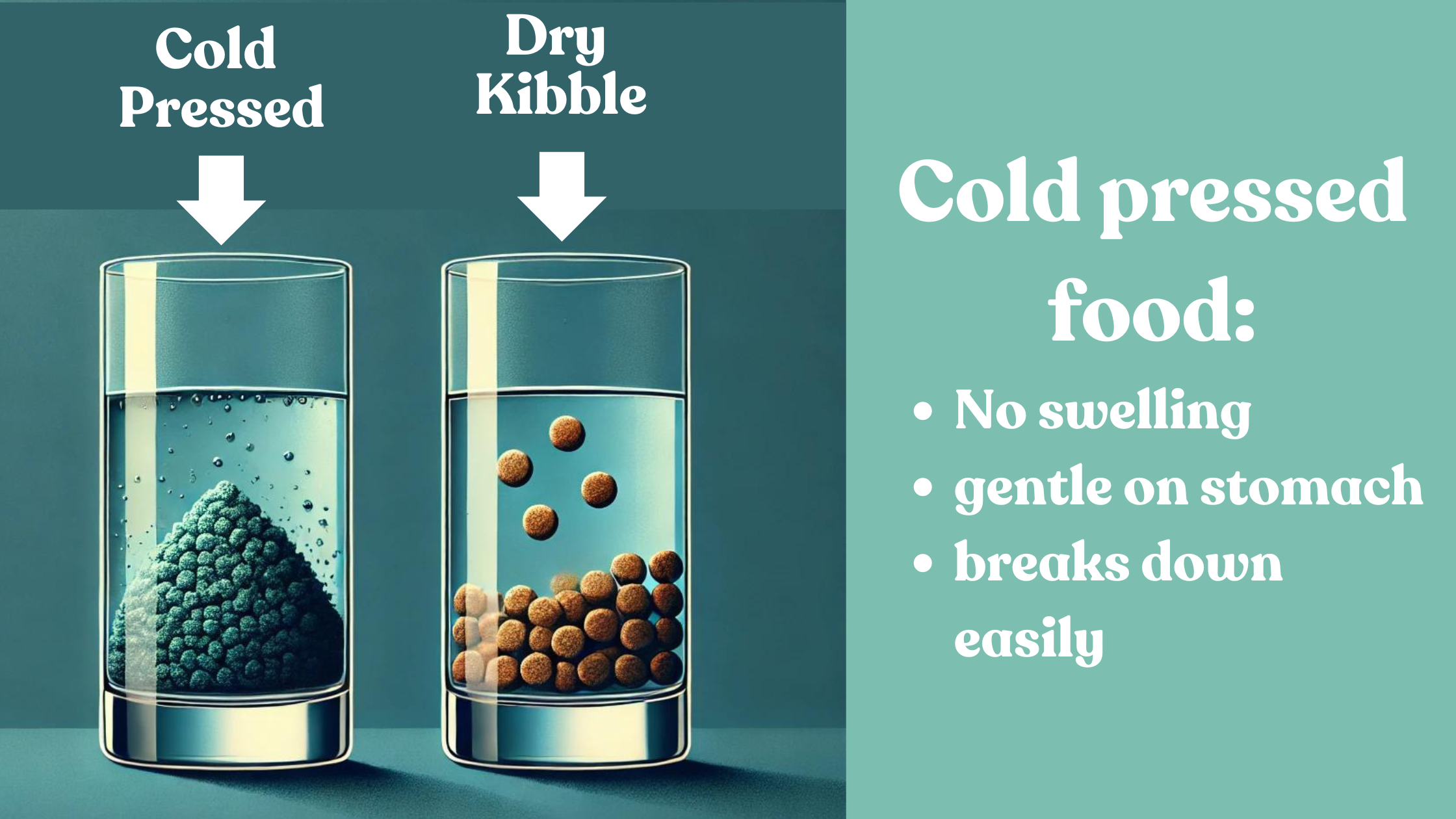
Tips for transitioning your dog to cold-pressed food
When transitioning your dog to cold-pressed dog food, it’s important to follow certain tips for a smooth dietary change.
- Gradual Introduction: Start by mixing a small amount of cold-pressed food with your dog’s current dry dog foods. Over the next seven to ten days, gradually increase the proportion of the new food while decreasing the old.
- Monitor Health: Keep an eye on your dog’s health and behavior. If you notice digestive issues or reluctance to eat, slow down the transition.
- Hydration: Cold-pressed food can be mixed with warm water to aid in hydration and make the switch easier, especially if your dog is used to wet food.
- Consistent Schedule: Maintain consistent feeding times. It helps your dog’s digestive system adjust to the change in diet.
- Correct Portion Sizes: Refer to the feeding guide on the cold-pressed dog food packaging to ensure you’re providing the right amount based on your dog’s weight and life stages.
- Patience: Every dog is different. Give your pet some time to adapt to the new taste and texture of cold-pressed food.
New at Dec’s Pets: Alpha and Primal Spirit Cold-Pressed Dog Food
We’re excited to now offer two top brands of cold-pressed dog food—Alpha and Primal Spirit. Known for superior digestion, high energy, and catering to dietary sensitivities, these brands deliver top-notch nutrition with minimal processing. Plus, they’re eco-friendly, aligning with sustainable pet care.
Discover our selection at Dec’s Pets and give your dog the best in cold-pressed nutrition today!

